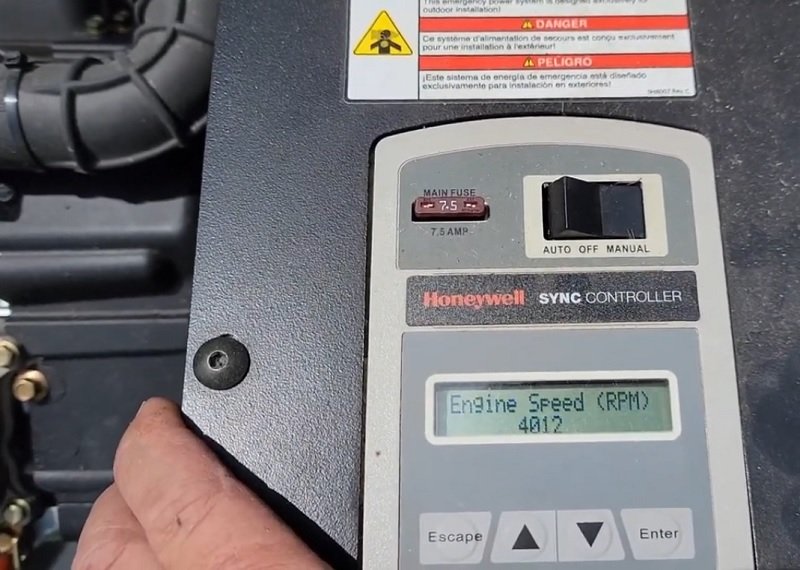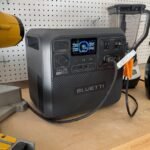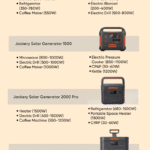Disclosure: This post contains affiliate links and I will be compensated if you make a purchase after clicking through my links. Learn More
To fix generator overspeed, check the engine speed sensor and the governor system. Adjust or replace these components as necessary.
A generator may overspeed due to a malfunctioning sensor or a faulty governor, which controls the engine’s RPM. By inspecting and repairing these parts, you can effectively resolve generator overspeed issues and ensure safe and efficient operation. Regular maintenance and monitoring of the engine speed sensor and governor system are essential to prevent damage to the generator and maintain its performance.
Neglecting to address overspeed problems promptly can result in serious equipment damage and potential safety hazards.

Reasons For Generator Overspeed And Its Dangers
Generator overspeed occurs when the engine driving the generator spins faster than its maximum allowable speed. This can be a serious issue with potentially disastrous consequences if not addressed promptly. Understanding the reasons behind generator overspeed and the associated dangers is crucial for proper maintenance and safe operation. In this article, we will delve into the causes of generator overspeed and the risks it poses, providing you with the knowledge necessary to prevent and fix this problem.
Understanding The Risks Of Generator Overspeed
Generator overspeed poses a significant risk to both the equipment itself and the people in its vicinity. Let’s take a closer look at the dangers:
Causes Of Generator Overspeed
Several factors can contribute to generator overspeed. It is essential to identify these causes to prevent recurring issues. Here are some common triggers:
Fuel supply malfunction: A disruption in the fuel supply system, such as a blocked fuel line or malfunctioning fuel pump, can result in inadequate fuel delivery to the engine. This can cause the engine to speed up uncontrollably, leading to overspeed.
Control system failure: The control system is responsible for regulating the generator’s speed and maintaining it within the desired range. A failure in the control system, such as a faulty governor or speed sensing device, can lead to erratic speed control and potential overspeed.
Load rejection: Suddenly disconnecting a large load from the generator while it is under high load conditions can cause a rapid acceleration in the engine speed. This abrupt change in load can overwhelm the governor’s response, resulting in overspeed.
Mechanical failures: Mechanical failures within the engine itself, such as a broken connecting rod or a malfunctioning valve, can cause the engine to operate at higher speeds than intended. These failures can lead to overspeed and potentially catastrophic damages if not addressed promptly.
Improper maintenance: Neglecting regular maintenance and inspections can increase the likelihood of overspeed occurrences. Insufficient lubrication, worn-out components, or improper adjustment of engine controls can all contribute to overspeed issues.
Knowing the causes is the first step towards preventing generator overspeed. By staying vigilant and addressing these issues promptly, you can ensure safe and reliable operation, minimizing the risks associated with overspeed events.
Regular Maintenance Practices To Prevent Generator Overspeed
Regular maintenance practices play a crucial role in preventing generator overspeed issues and ensuring optimal performance. By implementing a proactive approach towards maintenance, you can minimize the risk of overspeeding, which can lead to detrimental consequences for your generator and even pose safety hazards. In this section, we will explore the importance of regular maintenance for generator performance, the key maintenance tasks you should focus on to prevent overspeed issues, and a recommended maintenance schedule that will help you maintain the longevity of your generator.
Importance Of Regular Maintenance For Generator Performance
Regular maintenance is vital for maintaining the performance and reliability of your generator. Without proper maintenance, various components of the generator can succumb to wear and tear, resulting in reduced efficiency and increased likelihood of overspeeding.
Moreover, neglecting regular maintenance can lead to the accumulation of dust, debris, and other contaminants, which can further contribute to the malfunctioning of critical parts. By prioritizing regular maintenance, you can identify and rectify potential issues before they escalate, ensuring smooth operation and preventing costly breakdowns.
Key Maintenance Tasks To Prevent Overspeed Issues
To prevent overspeed issues, certain maintenance tasks should be undertaken regularly. These tasks include:
Monitoring and adjusting governor settings: The governor is responsible for regulating the speed of the generator. Over time, the governor settings can drift, leading to overspeeding. Regular monitoring and adjustment of these settings will ensure that the generator operates within the specified speed range.
Inspecting and cleaning air filters: Air filters play a critical role in keeping the generator’s engine free from contaminants. Regular inspection and cleaning of air filters will prevent clogging and ensure an uninterrupted airflow, thus reducing the chances of overspeeding.
Checking and lubricating moving parts: Adequate lubrication of moving parts is essential for smooth operation and to prevent excessive friction. Regularly inspecting and lubricating bearings, belts, and other moving components will keep them in optimal condition, minimizing the risk of overspeed issues.
Inspecting and tightening electrical connections: Loose or faulty electrical connections can disrupt the generator’s performance and potentially lead to overspeeding. Regularly inspecting and tightening electrical connections will help maintain a stable electrical flow and prevent any voltage irregularities.
Testing and maintaining the cooling system: The cooling system of a generator is responsible for dissipating excess heat. Regularly testing and maintaining the cooling system, including checking coolant levels, inspecting hoses, and cleaning radiator fins, will ensure efficient heat dissipation and prevent overheating-induced overspeeding.
Inspecting and cleaning the fuel system: A clean and well-maintained fuel system is crucial for the generator’s performance. Regularly inspecting and cleaning fuel filters, tanks, and lines will prevent fuel flow disruptions and maintain optimal combustion, minimizing the risk of overspeeding.
Recommended Maintenance Schedule For Generators
To maintain the integrity and longevity of your generator while preventing overspeed issues, it is essential to adhere to a recommended maintenance schedule. The specifics of the schedule can vary depending on the generator’s make, model, and usage, but here is a general guideline to follow:
| Maintenance Task | Frequency |
|---|---|
| Regular governor settings monitoring and adjustment | Every 6 months |
| Air filter inspection and cleaning | Every 3 months |
| Moving parts inspection and lubrication | Every 6 months |
| Electrical connection inspection and tightening | Every 3 months |
| Cooling system testing and maintenance | Every 12 months |
| Fuel system inspection and cleaning | Every 6 months |
By adhering to this recommended maintenance schedule, you can significantly reduce the risk of generator overspeed, ensuring a reliable and efficient power supply when you need it the most. Remember, proactive and regular maintenance practices are key to the optimal performance and longevity of your generator.
Troubleshooting Generator Overspeed Issues
Dealing with generator overspeed issues can be a daunting task. When a generator runs faster than its maximum designed speed, it can lead to severe damage and pose a safety risk. Therefore, it is crucial to promptly diagnose and fix overspeed problems to ensure the reliable and efficient operation of your generator.
Step-by-step Guide To Diagnose Overspeed Problems
If you suspect your generator is experiencing overspeed issues, follow these steps to identify and troubleshoot the problem:
Check the engine RPM: Start by determining the current speed of the engine. Refer to the manufacturer’s specifications to understand the acceptable RPM range for your generator. Analyzing the engine speed will help you determine if overspeed is indeed the problem.
Inspect the governor and linkage system: The governor is responsible for controlling the engine’s speed. Examine the governor and its linkage system to ensure they are functioning correctly. Look for any visible signs of damage or misalignment that could be causing the overspeed issue.
Inspect the control system: The generator’s control system plays a crucial role in regulating its speed. Check the control panel and any associated wiring for any loose connections or faulty components. Ensure that the control system is sending accurate signals to the engine to maintain the desired RPM.
Verify the load: Overspeed problems can also occur due to excessive or sudden changes in the load applied to the generator. Check if the load is within the generator’s rated capacity and ensure that it remains stable. Fluctuations in the load can impact the engine speed.
Inspect the fuel system: A malfunctioning fuel system can cause irregularities in engine speed. Check the fuel filters, pump, and injectors for any clogs or defects. Make sure that the fuel system is delivering a consistent and adequate supply of fuel to avoid overspeed conditions.
Consult a professional: If you have followed these steps and haven’t identified the root cause of the overspeed issue, it is recommended to seek the assistance of a professional generator technician. They possess the expertise and diagnostic equipment necessary to pinpoint and rectify the problem.
Common Signs And Symptoms Of Generator Overspeed
Identifying the signs of generator overspeed is crucial for prompt diagnosis and resolution. The following are common symptoms that may indicate an overspeed issue:
- Excessive noise or vibrations from the generator
- Abnormal engine RPM displayed on the control panel
- Rapid and uncontrollable acceleration of the generator
- Frequent tripping of the overspeed protection system
- Engine oil leaks or burning smell
- Unusual exhaust emissions or smoke
Identifying The Root Cause Of Overspeed Issues
To effectively address generator overspeed problems, it is crucial to identify the underlying cause. Several factors can contribute to overspeed, including:
- Governor or linkage system malfunction
- Control system failure or misconfiguration
- Excessive or sudden changes in the load
- Fuel system issues or fuel supply fluctuations
- Mechanical problems within the engine
By identifying the root cause, you can take appropriate measures to rectify the issue and prevent further damage to your generator.
Expert Solutions To Fix Generator Overspeed
If your generator is running at a higher than normal speed, it could lead to various problems such as component damage, increased noise levels, and potential safety hazards. To address this issue, it’s crucial to identify the root cause and take appropriate actions to fix the generator overspeed.
Solution 1: Adjusting The Governor Settings
Misaligned or faulty governor settings can often cause generator overspeed. The governor regulates the engine speed under varying load conditions. To resolve this issue, it is recommended to adjust the governor settings. Consult the generator’s manufacturer’s manual for specific instructions on how to adjust the governor. Proper adjustment of the governor can help restore the generator’s speed to the desired levels.
Solution 2: Inspecting And Cleaning The Air Filters
Clogged air filters can restrict the airflow to the engine, leading to an increase in engine speed. Regularly inspect and clean the air filters to ensure they are free from debris and dust. If the air filters are excessively dirty, replace them according to the manufacturer’s recommendations. Clean air filters will promote proper combustion and help regulate the generator’s speed.
Solution 3: Checking And Replacing Faulty Spark Plugs
Faulty spark plugs can also contribute to generator overspeed. Inspect the spark plugs for any signs of damage or wear. If necessary, replace them with new spark plugs that meet the manufacturer’s specifications. Good spark plugs guarantee accurate ignition timing, which is essential for maintaining the proper speed of the generator.
Solution 4: Verifying The Fuel System And Components
A malfunctioning fuel system or its components can lead to an imbalance in fuel supply, resulting in generator overspeed. Check the fuel system for any leaks, cracks, or blockages. Inspect the fuel pump, fuel filters, and fuel lines for proper functioning. Address any issues promptly and ensure the fuel system is providing a consistent and appropriate fuel supply.
Solution 5: Ensuring Proper Lubrication Of Moving Parts
Inadequate lubrication of the generator’s moving parts can cause friction and increased speed. Regularly check and maintain the lubrication levels as recommended by the manufacturer. Lubricate all moving parts, including the engine, bearings, and other relevant components, to ensure smooth operation and prevent generator overspeed.
Solution 6: Inspecting And Replacing The Control Module
The control module of the generator is responsible for regulating various functions, including speed control. If the control module is malfunctioning, it can cause overspeed issues. Inspect the control module for any signs of damage or malfunction. If necessary, replace the control module with a compatible one to restore proper speed control.
Solution 7: Testing And Replacing The Voltage Regulator
The voltage regulator regulates the output voltage of the generator. A faulty voltage regulator can cause erratic speed fluctuations. Perform a voltage regulator test to determine its functionality. If the voltage regulator is found to be defective, replace it with a new one to ensure stable speed control and prevent generator overspeed.
Solution 8: Verifying The Cooling System And Addressing Overheating
Overheating can lead to increased engine speed. Check the cooling system, including the radiator, thermostat, and coolant levels, to ensure proper operation. Clean any debris or dirt that may restrict airflow. Address any overheating issues promptly to maintain the generator’s speed within acceptable limits.
Solution 9: Balancing The Load And Adjusting Power Demand
An unbalanced load or excessive power demand can strain the generator and cause it to overspeed. Ensure the load is evenly distributed among the generator’s phases. Additionally, identify and reduce any unnecessary power demand that may be causing overload. Balancing the load and adjusting power demand will promote stable generator operation.
Solution 10: Seeking Professional Assistance When Needed
If you are unable to identify or resolve the generator overspeed issue on your own, it is advisable to seek professional assistance. An experienced technician can thoroughly inspect the generator, diagnose the problem accurately, and apply the necessary fixes. Professional help ensures that the generator is repaired effectively and operates safely.
Frequently Asked Questions On How To Fix Generator Overspeed?
How Do You Stop A Generator From Overspeeding?
To stop a generator from overspeeding, follow these steps: 1. Shut off the fuel supply, 2. Activate the emergency stop switch, 3. Reduce the load on the generator, 4. Allow the generator to cool down before restarting, 5. Inspect and service the generator as per manufacturer’s instructions.
What Causes Overspeed In Generators?
Overspeed in generators can be caused by factors such as faulty governor systems or power imbalances. It can also result from mechanical issues like damaged shafts or worn-out components. Regular maintenance and proper adjustment of the governor can help prevent overspeeding.
What Is The First Thing To Do If A Generator Overspeeds?
The first step to take if a generator overspeeds is to shut it down immediately. This will help prevent any further damage or potential dangers.
What Causes Engine Overspeed?
Engine overspeed is typically caused by a sudden increase in fuel supply or a malfunctioning throttle mechanism. It can also occur due to mechanical failures like a broken valve spring or a failed governor. Driving in a low gear for too long or racing can also lead to engine overspeed.
Final Words
Addressing generator overspeed is crucial to ensure the safe and efficient operation of your equipment. By regularly inspecting and maintaining your generator, monitoring speed and load, and addressing any issues promptly, you can prevent potential damages and ensure its longevity.
Remember to consult a professional for any complex problems and always prioritize safety. With these tips, you can effectively fix generator overspeed and enjoy uninterrupted power supply.








